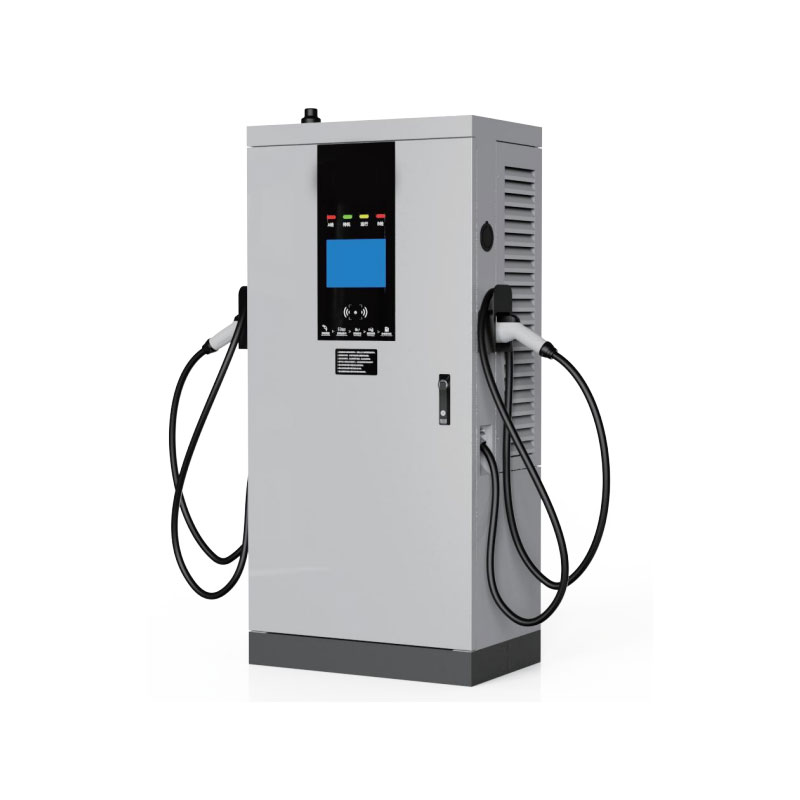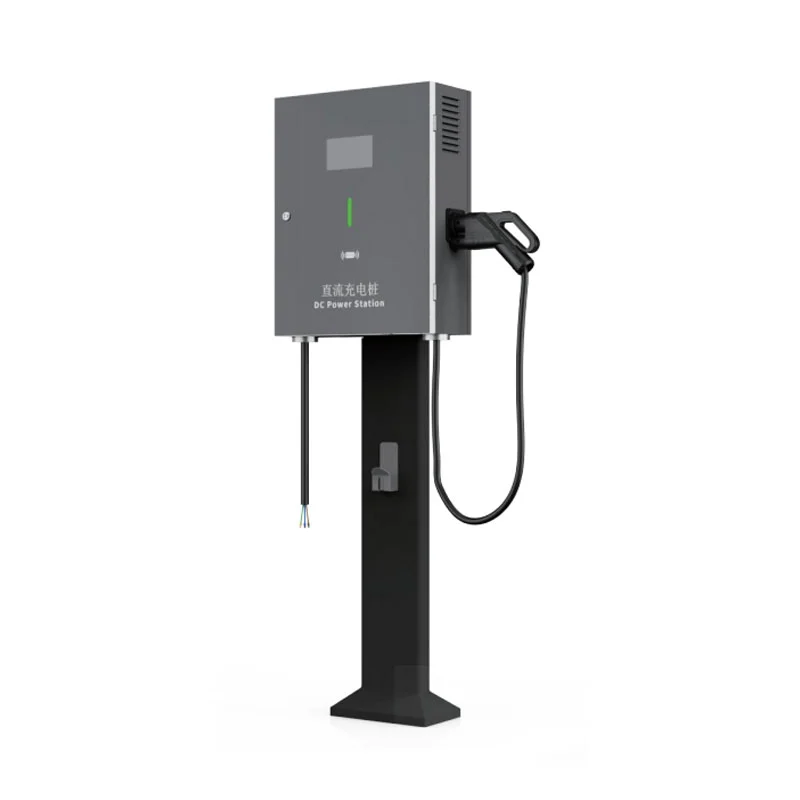Why Choose a DC EV Charger for Electric Mobility?
The global shift toward electric vehicles (EVs) has created an urgent demand for fast, reliable, and efficient charging infrastructure. At the heart of this transformation stands the DC EV Charger, a technology that is shaping the way drivers power their vehicles. Unlike conventional AC chargers, which rely on the vehicle’s onboard converter to change alternating current into direct current, a DC EV Charger delivers direct current directly to the battery. This bypasses the onboard limitations, allowing for a much faster charging speed.
For drivers, the difference is night and day. While an AC charger might take several hours to replenish a battery, a DC EV Charger can deliver significant range in less than 30 minutes. This efficiency makes it the preferred solution for highways, fleet depots, public charging stations, and commercial applications where time and convenience are critical.
The importance of DC charging goes beyond speed. It is also about enabling the widespread adoption of EVs by ensuring that infrastructure can keep pace with the growing number of vehicles on the road. A slow and unreliable charging experience could discourage potential EV buyers, but robust DC charging networks encourage confidence and long-distance travel.
Moreover, as battery capacities grow with advancements in EV technology, the need for higher power charging becomes even more apparent. Modern EVs often feature batteries of 60 kWh to 120 kWh, and some heavy-duty models exceed 200 kWh. To charge such large batteries efficiently, DC charging is not just beneficial—it is essential.
Why DC EV Chargers Are Essential for Modern Transportation
The transition to EVs is not just about vehicles; it is about building a sustainable ecosystem. DC EV Chargers are a cornerstone of this ecosystem because they bridge the gap between driver expectations and the realities of energy supply.
Speed and Efficiency
A primary advantage of DC chargers is the high charging speed. For example, a 150 kW DC charger can add up to 200 km (124 miles) of range in about 20 minutes, depending on the vehicle model. For fleet operators, this means less downtime and more productivity. For individual drivers, it means the ability to travel long distances without long interruptions.
Scalability for Different Use Cases
DC charging stations are versatile. They can be installed at:
-
Highways and service stations for fast, long-distance travel.
-
Urban charging hubs to support city dwellers who may not have private parking.
-
Commercial fleet depots to ensure that delivery vans, buses, and taxis stay on schedule.
-
Workplaces and retail centers to enhance convenience for employees and customers.
Support for Next-Generation EVs
Automakers are pushing EV innovation forward, and newer models support higher charging capacities—up to 350 kW or more. A DC EV Charger that meets these power levels ensures compatibility with both current and future vehicles, protecting investment in infrastructure.
Environmental Benefits
Fast and efficient charging encourages more EV adoption, reducing dependency on fossil fuels and lowering greenhouse gas emissions. Additionally, many DC chargers can be integrated with renewable energy sources, such as solar or wind power, making the entire ecosystem more sustainable.
Smart Features and Connectivity
Modern DC chargers are not only power delivery units but also intelligent systems. They feature:
-
Dynamic load balancing to manage power across multiple chargers.
-
OCPP (Open Charge Point Protocol) compliance for seamless network integration.
-
Smart billing systems for commercial use.
-
User-friendly interfaces to enhance the charging experience.
These innovations transform charging into an efficient, flexible, and profitable solution for both businesses and end users.
Technical Specifications of Our DC EV Charger
To make an informed choice, customers need a clear understanding of technical parameters. Below is a summary of the specifications that define a professional-grade DC EV Charger:
| Specification | Details |
|---|---|
| Power Output | 60 kW, 120 kW, 180 kW, up to 360 kW configurations |
| Input Voltage | 380V–480V AC, three-phase |
| Output Voltage Range | 200V–1000V DC (wide compatibility with EV batteries) |
| Connector Standards | CCS2, CHAdeMO, GB/T |
| Efficiency | ≥ 95% |
| Display & Interface | 7”–15” touch screen with multilingual support |
| Cooling System | Intelligent air or liquid cooling |
| Communication Protocols | OCPP 1.6J / OCPP 2.0.1 |
| Payment Options | RFID, mobile app, QR code, credit card |
| Safety Features | Over-voltage, under-voltage, over-current, short-circuit, emergency stop |
| Operating Temperature | -30°C to +55°C |
| Enclosure Rating | IP54 / IP65 (indoor and outdoor suitability) |
These specifications ensure that the charger is reliable, durable, and suitable for diverse operating environments. Whether deployed in extreme climates or heavy-use urban centers, the charger delivers consistent performance.
Future Outlook, FAQs, and Brand Value
The future of mobility is electric, and the pace of adoption is accelerating. Governments worldwide are introducing regulations and incentives to promote EV usage, while corporations and consumers alike demand greener transportation solutions. In this context, DC EV Chargers are not just tools—they are enablers of transformation.
Investments in charging infrastructure are expected to multiply in the coming years. Cities will require thousands of fast chargers to serve urban populations, while highways will need ultra-fast charging corridors for long-distance drivers. Businesses that adopt early, by installing DC EV Chargers, will position themselves at the forefront of this transition, attracting customers, enhancing their brand image, and supporting sustainability goals.
Common Questions about DC EV Chargers
Q1: How fast can a DC EV Charger charge my car?
A DC EV Charger can typically add 100–300 km (62–186 miles) of range in 20–40 minutes, depending on the charger’s power output and the vehicle’s battery capacity. Higher-rated chargers (e.g., 150 kW or 350 kW) provide even faster charging for compatible EVs.
Q2: What is the difference between AC and DC charging?
AC chargers deliver alternating current that must be converted inside the vehicle by an onboard converter, which limits charging speed. DC chargers deliver direct current directly to the battery, bypassing the onboard converter and enabling much faster charging times.
Choosing the right charging solution is critical for ensuring convenience, efficiency, and long-term reliability. A DC EV Charger offers unmatched advantages in speed, compatibility, and smart integration, making it the ideal choice for both personal and commercial use.
At VanTon, we are committed to delivering advanced DC EV Chargers that combine powerful performance with intelligent design. Our products are built to meet global standards, ensuring seamless integration across diverse applications. If you are ready to take the next step in future-ready charging infrastructure, contact us today to explore solutions tailored to your needs.
- How did a floor charger change my EV site economics overnight?
- Are EV Charging Adapters Safe for Daily Use
- Which DC EV charger helps me win more drivers and profit sooner?
- What Makes A DC EV Fast Charging Project Actually Work?
- What did I learn when a DC fast charger became part of my everyday business?<
- How fast is a DC EV charger?














